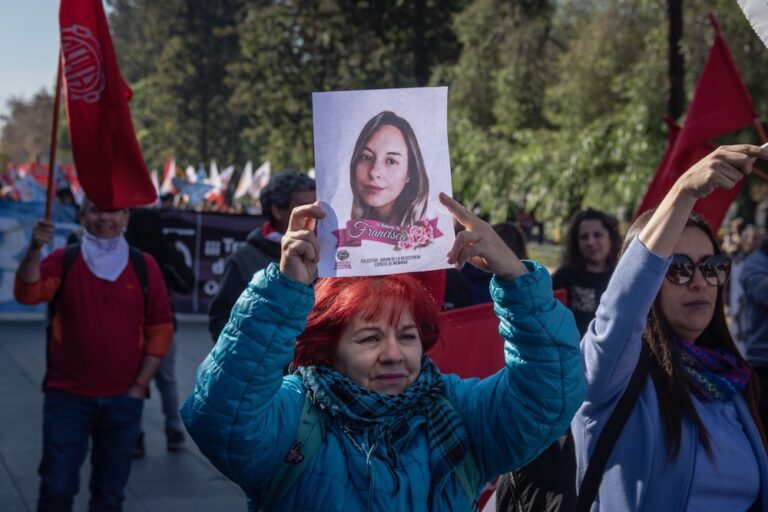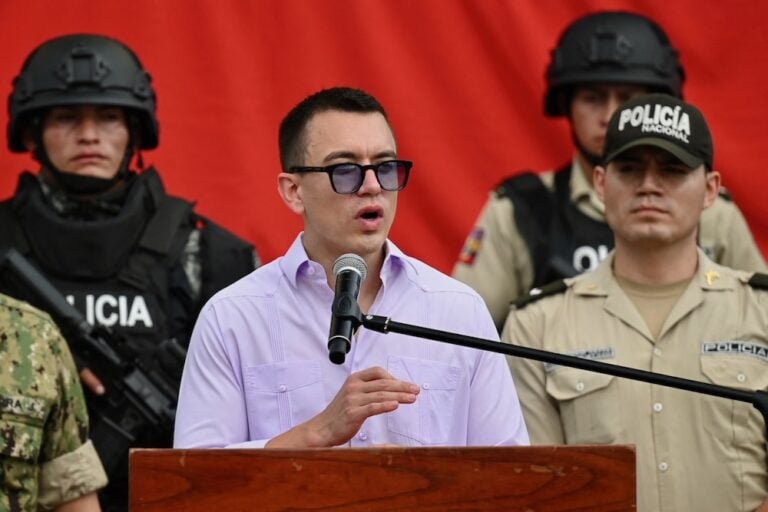A journalistic team was detained by members of indigenous groups in the Amazon region, while police officers in Guayaquil forced a photojournalist to delete images from his camera.
(IPYS/IFEX) – On 1 October 2009, a journalistic team from the “Diario Expreso” newspaper, made up of journalist Marieta Campaña, photographer René Fraga and driver Luis Espinosa, was detained for three hours by a group of people from the Shuar, Achuar and Kichwas indigenous populations in the Simón Bolívar area of Ecuador’s Amazon region.
The journalists were in the area to cover protests being carried out by the indigenous groups against a proposed law on water which is being promoted by the executive branch of the government. According to the journalistic team, around fifty people appeared on the road and prevented them from continuing on. Upon learning that they were from the media, the group reacted violently and accused them of failing to tell the truth and of being President Rafael Correa’s allies.
The journalists were held for three hours. The people who detained them believe that the press has been biased in its reporting on their demands. The journalists were threatened with lances.
The journalistic team was released after Marlon Santi, the president of the National Confederation of Indigenous Peoples (Confederación de Nacionalidades Indígenas, CONAIE), intervened in the situation.
In a separate incident, also on 1 October, a photojournalist from the “Diario Hoy” newspaper, who preferred not to be identified for fear of reprisals, was prevented from taking pictures of the façade of Minister for Policy Coordination Ricardo Patiño’s home in the city of Guayaquil. The journalist went to the house after Fabricio Correa, President Correa’s brother, accused Patiño of being a communist who lives in a luxury home.
According to news reports, Patiño’s home did not appear in an August 2008 sworn statement detailing the minister’s income and property holdings.
After taking pictures of Patiño’s home, the photojournalist was stopped by a police officer who was watching over the neighbourhood in which the house is located. The officer would not let the photojournalist leave the area without first showing him the photographs that had been taken. The officer was subsequently backed by three other police officers who arrived in a patrol car. In order to be allowed to leave, the photojournalist deleted the images from the camera’s external memory. The photographs, however, had also been saved in the internal memory and, as such, were published by the newspaper.
FUNDAMEDIOS and IPYS condemn the police officers’ actions as they attempted to prevent a journalist from carrying out his work and call on the authorities to punish those responsible.


